Indian musical instruments are an integral part of the nation’s culture and its cultural expressions.
They form such a close bond that each musical instrument is often associated with a God or Goddess.
Music and the distinct sound from these instruments are also an integral part of worship and prayer rituals.
One simply cannot imagine Indian culture without the numerous musical instruments that are unique to the country.
Ancient sculptures, art and architecture all depict both the divine and human with musical instruments.
With such cultural and historical significance, there are hundreds of Indian musical instruments that have evolved over time.
The 8 Major Indian Musical Instruments with Pictures
Hundreds of musical instruments are used all across India especially for folk-music, deep within the heart of the nation.
However, over time some of these musical instruments have evolved to attain a more prominent status.
All of the Indian musical instruments are based on the four music classes of string, wind, drums and bells.
Given below are the 8 major Indian musical instruments that are used the most in classical Indian music.
1) Saraswati Veena
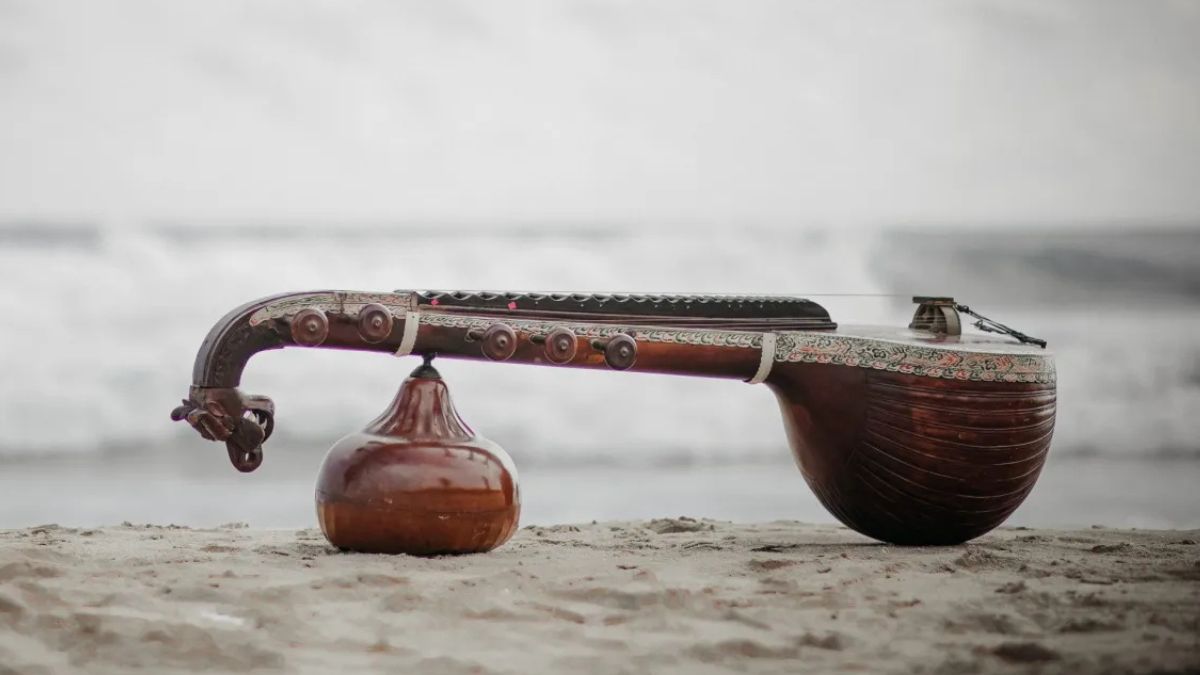
Veena is the national musical instrument of India and holds a significant place in Indian classical music. It is a large, fretted lute with a pear-shaped body, a long neck, and seven strings. The strings are made of metal and are plucked with a plectrum or fingers. The body of the veena is usually made from a single block of wood, usually jackfruit tree, and the frets are made from hardened wax. It is played by sitting cross-legged and placing the instrument across the lap. The veena is known for its rich, resonant sound and is often associated with the Hindu goddess of learning and the arts, Saraswati. It is a complex and challenging instrument to learn, but its unique sound and cultural significance make it a valuable and cherished part of Indian music.
2) Sitar
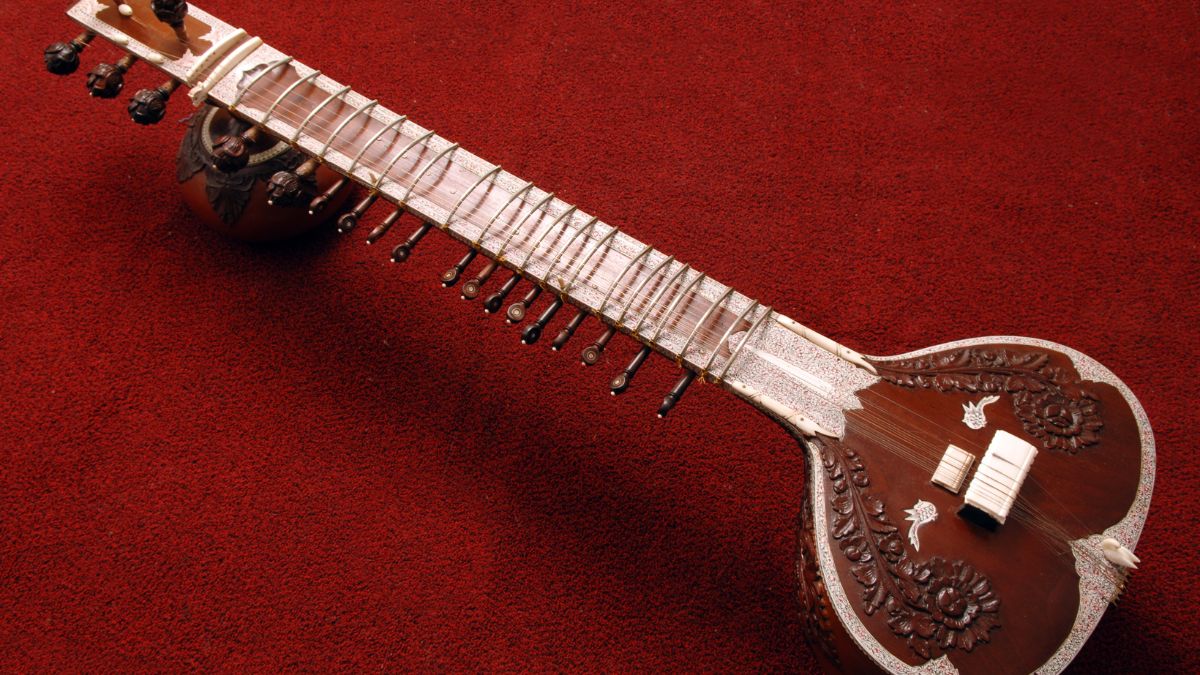
The sitar is a stringed musical instrument. It is a member of the lute family and is known for its unique sound and intricate design. The sitar has a long, hollow neck with a flat, rounded body, and a bridge that is set at an angle. The strings are plucked with a plectrum called a mizrab, and the sound is produced by both the vibrating strings and the resonating body of the instrument.
3) Tabla
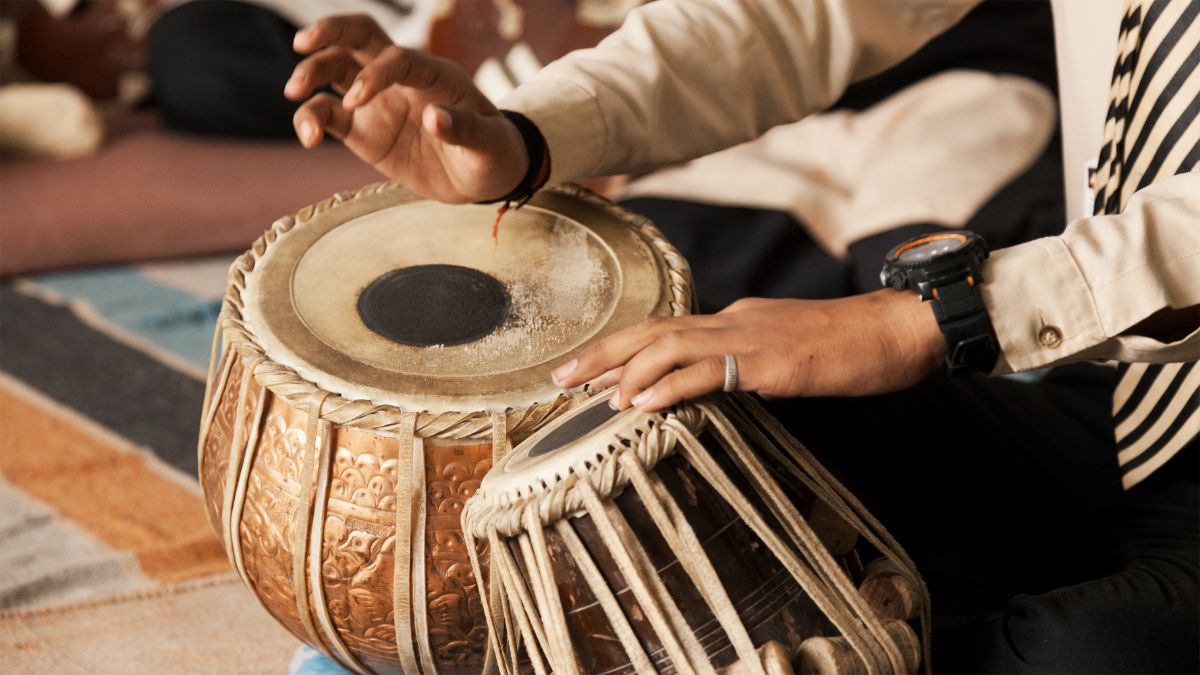
Tabla is a percussion instrument that is widely used in Indian classical music. It is a pair of hand drums consisting of two drums, a smaller one called the Dayan and a larger one called the Bayan. The Dayan, which is played with the dominant hand, is made of wood and has a narrow neck with a round body. The Bayan, played with the other hand, is made of copper or brass and has a wide body with a flared rim. The two drums are tuned to different pitches and produce a variety of tones when struck with the fingers and palms. The tabla is known for its versatility and dynamic range, and is often used to accompany vocalists, instrumentalists, and dancers in classical and popular genres of music.
4) Harmonium
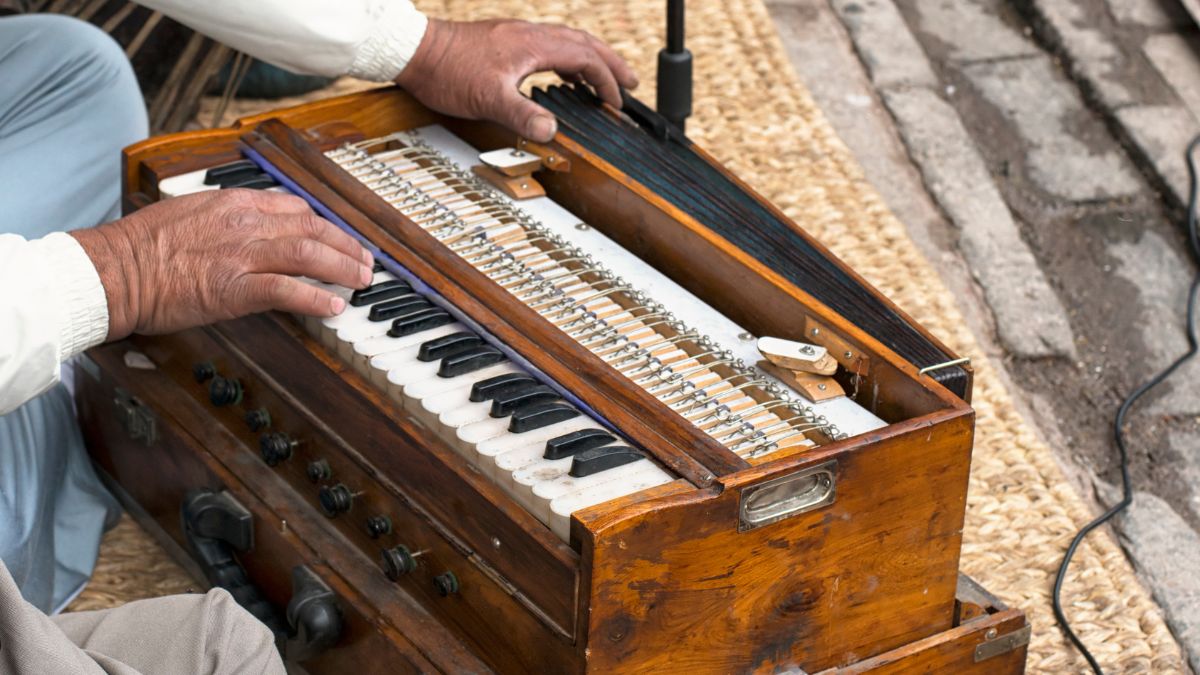
A harmonium is a free-standing musical instrument that is played by pumping air through its bellows with one hand while playing keys with the other. It is similar to a keyboard in appearance and produces sound by blowing air through reeds, which are metal strips that vibrate when air flows over them. It can produce a range of sounds, from soft and gentle to loud and powerful, and is often used to accompany vocals or other instruments. Overall, the harmonium is a versatile and unique instrument that has become an important part of many musical traditions.
5) Shehnai
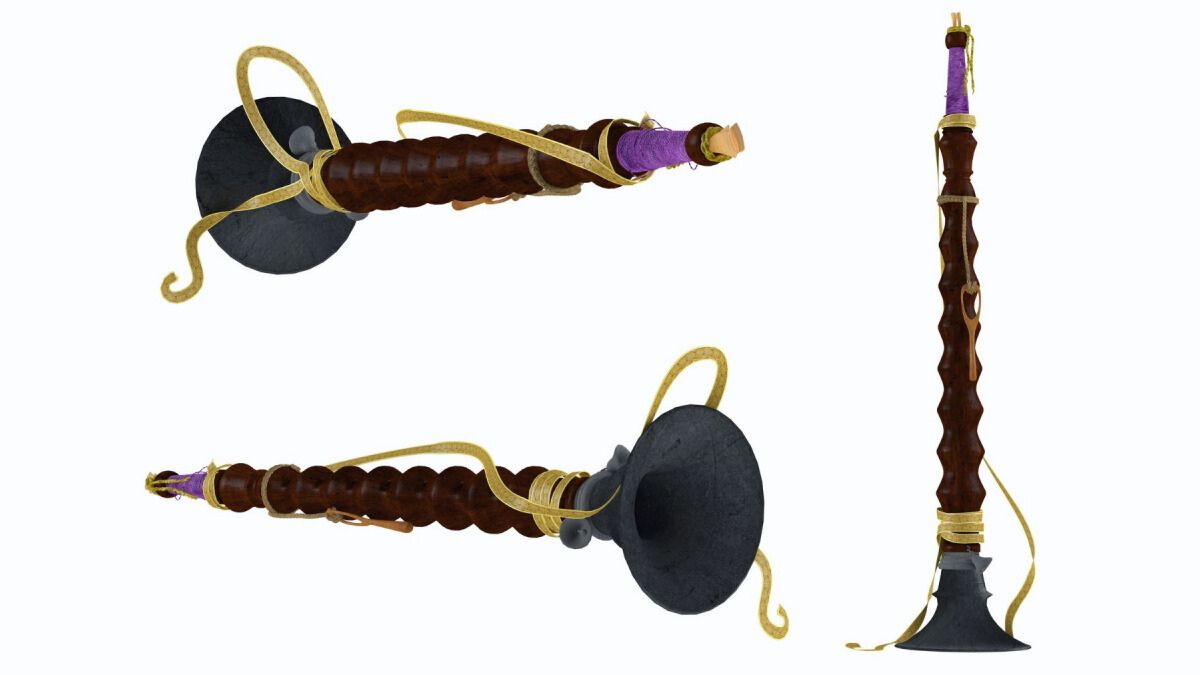
The shehnai is a traditional Indian wind instrument that is made of wood with a metal bell at the end. It has a long, cylindrical shape with a tapering bore, and is played with a double reed. The sound of the shehnai is high-pitched, nasal and very penetrating, making it a popular instrument for weddings and other celebrations in India. It is often accompanied by the tabla and other percussion instruments. The shehnai is said to have originated in the Indian state of Uttar Pradesh and is considered to be one of the oldest instruments in Indian classical music. Its unique sound and cultural significance make it a beloved instrument in India.
6) Sarod
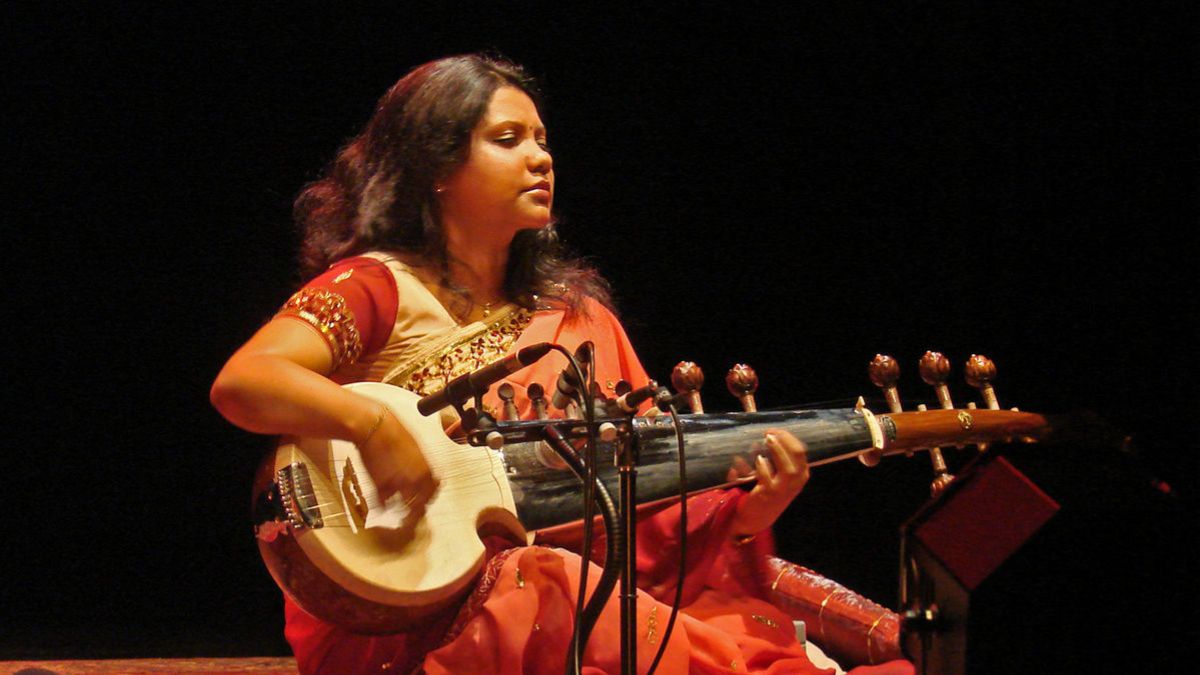
The sarod is a stringed musical instrument that originated in India. It is similar to the Western lute but has a longer neck and a fretless fingerboard. The body of the sarod is typically made of teak wood and has a skin-covered resonating chamber. The strings of the sarod are plucked with a plectrum made of coconut shell or ebony, and the instrument is played while sitting cross-legged on the floor. The sarod is commonly used in Indian classical music and is known for its rich, deep tone and expressive capabilities.
7) Bansuri
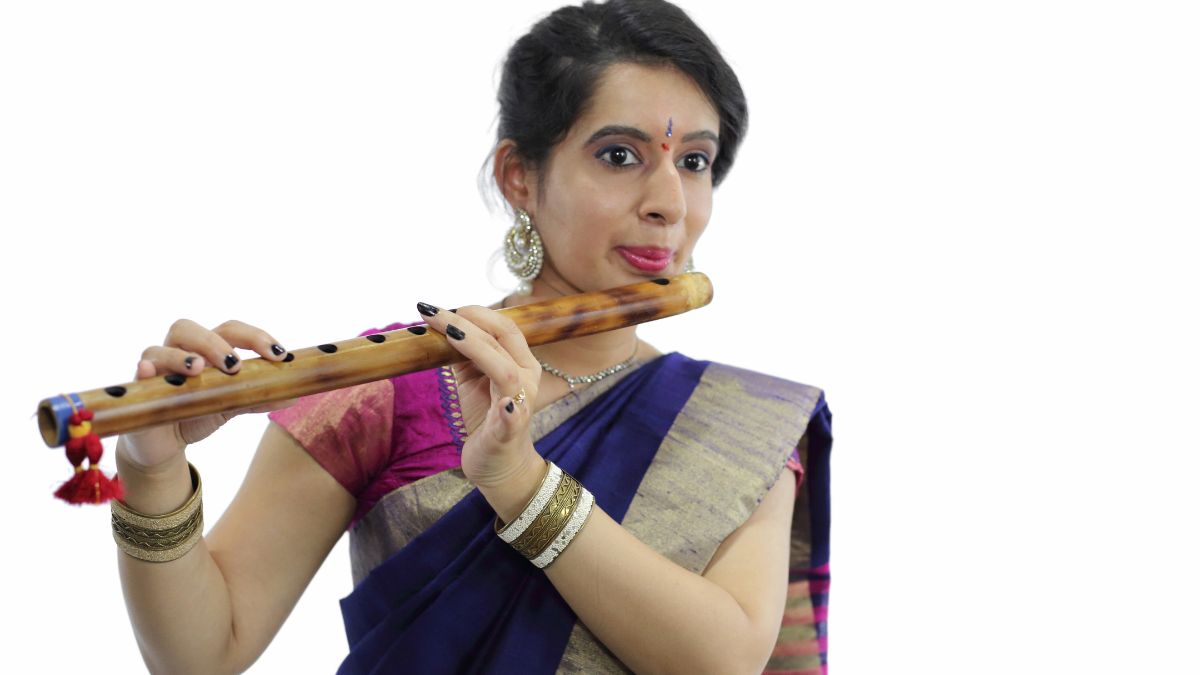
Bansuri is a traditional Indian musical instrument that belongs to the family of flutes. It is made up of bamboo and has six or seven finger holes, depending on its size. The sound of the bansuri is soothing and gentle, with a unique timbre that is hard to miss. It is a popular instrument in Indian classical music and is often used to play ragas. The bansuri is played by holding it horizontally and blowing across the hole at one end. The player changes the pitch of the instrument by covering and uncovering the finger holes. Despite its simplicity, the bansuri has a rich history and is still widely used in India and around the world today.
8) Santoor
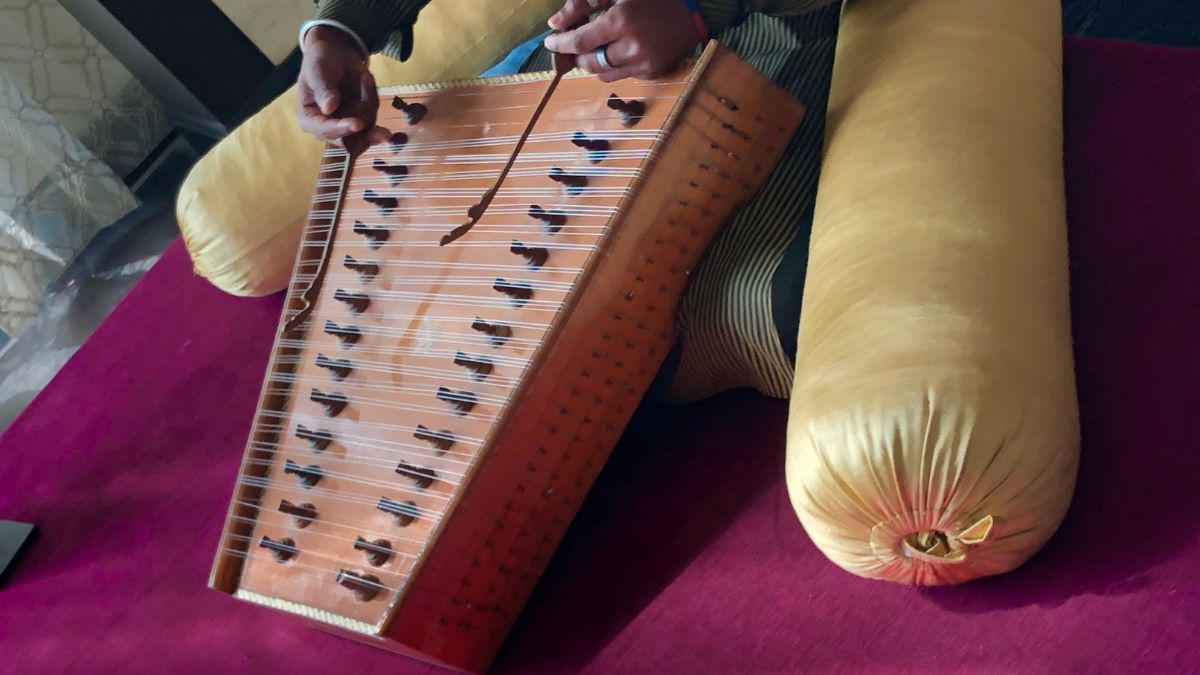
The santoor is a stringed musical instrument. It consists of a trapezoidal-shaped wooden body with strings stretched across its top that are struck with a pair of wooden mallets called mezrab. The santoor typically has around 72 strings, arranged in sets of 3, with each set tuned to the same note. The player can vary the pitch of the notes by striking the strings with different degrees of force or by pressing on them with their fingertips. The santoor has a rich, resonant sound that is often described as ethereal or haunting, and it is used to create a wide range of moods and emotions in traditional music.
You may also like to read: Major Classical and Traditional Folk Dance Forms of India
Final thoughts
Indian musical instruments have a special place in the nation’s history, its culture and heritage.
They have a distinct melody and deep complexity to them, the sound of which is quintessentially Indian.

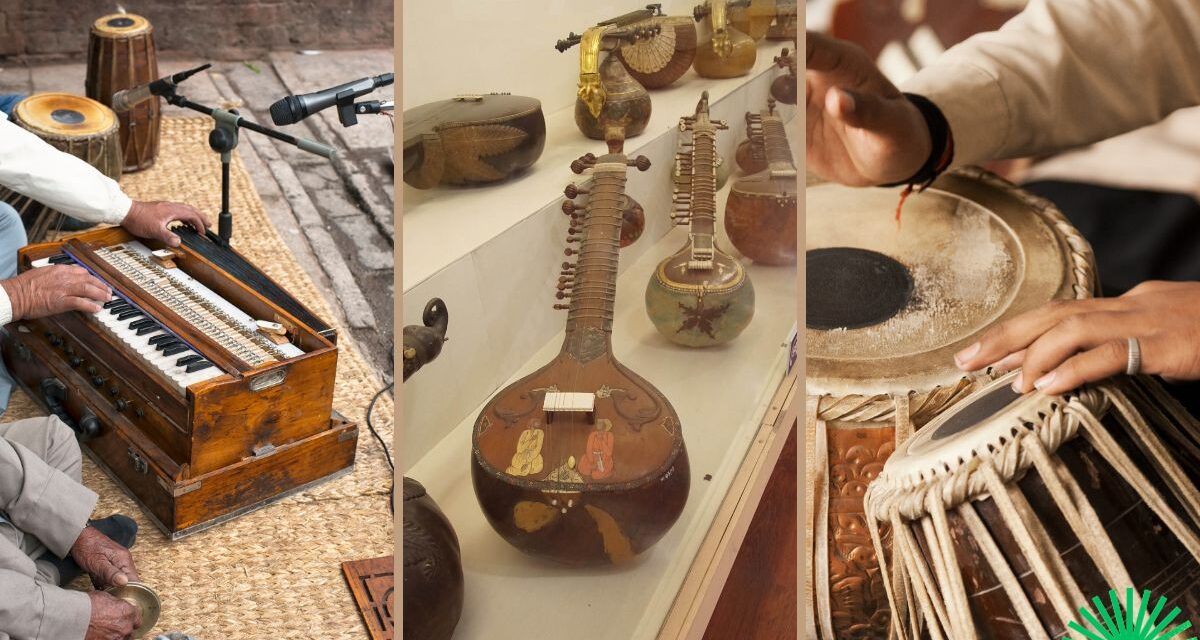
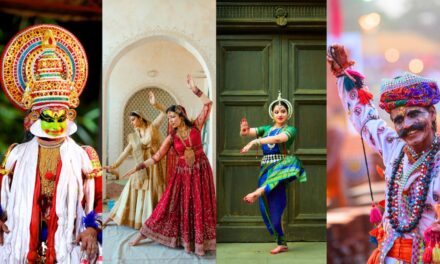
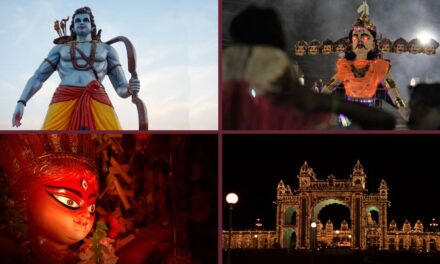

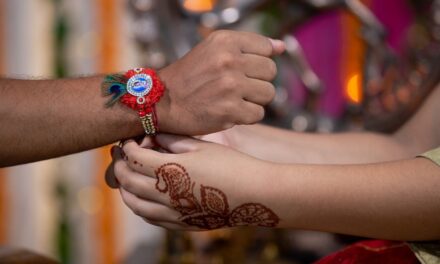
Trackbacks/Pingbacks